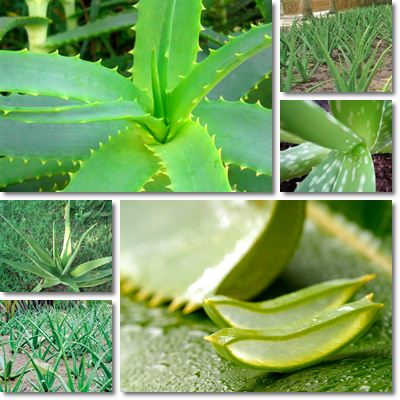Today I am excited to speak to you about a favorite of herbal medicine: Aloe vera. Aloe started out as an ornamental plant and continues to spark enthusiasm in gardeners worldwide up to this day. However, the plant is also a potent medicinal herb with several wonderful health benefits.
Aloe vera has been found to possess excellent anti-inflammatory, emollient and soothing properties and is believed to help treat a variety of skin issues, from burns to ulcers as well as digestive upset and provide benefits for gastritis and inflammatory conditions of mucous membranes.
The healing properties of Aloe vera are a direct result of its strong anti-inflammatory action and soothing effect. The gel extracted from the meaty leaves of the plant is the part used for medicinal purposes.
Aloe vera can be used both externally and internally, in various preparations. While not very palatable, it’s one of the most effective natural remedies for gastritis and stomach ulcers with extremely fast effects, visible in days after starting treatment.

What does Aloe vera look like?
Aloe vera plants resemble a knit basket of tentacles of a grayish-green or deep green color, depending on the variety. The elongated, meaty leaves are covered by little sharp white spines like tiny teeth arranged along the margins. A long stem rising from the middle of the plant supports a yellow or red elongated flower that usually blossoms in mid-summer. When you break an aloe leaf in half, you will notice a translucent gel inside taking up all the space. This gel holds all the medicinal benefits of the plant and is the part used for the treatment of digestive conditions, skin problems and for cosmetic purposes. As for the taste, Aloe vera gel is extremely bitter.
Aloe vera benefits and uses
Research regarding the health effects of Aloe vera is contradicting, with some studies showing positive results for various uses and others warranting caution for fear of side effects. However, what is known is Aloe vera gel has impressive anti-inflammatory and soothing properties. Preparation of the gel are effective at relieving heartburn and acid reflux disease symptoms. Taking preparations made from the gel helps soothe the stomach and heal gastritis.
Actually, for me, a two-week treatment meant getting rid of my gastritis completely. I had gotten a concentrated Aloe vera gel-based preparation and had two tablespoons every morning on an empty stomach, one hour before eating for two weeks straight. The taste was horrible and I could barely get through it even though I had honey afterwards, but I felt great and a few days into the treatment, my gastritis improved significantly.
After two weeks, I no longer had any symptoms and felt my stomach going to how it was before the gastritis.
Read more about what foods to eat and to avoid for gastritis.

Aloe vera gel-based drinks would make a wonderful substitute for regular fizzy drinks and even fruit juices. However, because the plant is extremely bitter, it would require copious amounts of sugar to improve its taste and make it palatable, or honey if you are not allergic to bees or bee products. So make sure you read the label before getting anything aloe-based and find out just how much sugar it contains. Added vitamins could further add to the benefits.
Aloe vera preparations have restorative and soothing properties. For this reason, the plant is used for treating sunburns, rashes, insect bites, ulcers and even reported to help with psoriasis or dermatitis.
The gel is also an excellent natural emollient and widely used in the beauty industry for face wipes, moisturizers, sunburn lotions, various skin care products or added to shampoos for dry, irritated scalp and soaps for dry skin. Indeed, Aloe vera is useful for treating minor burns, soothing skin irritation and may be helpful for sensitive skin. Moreover, the plant is a main ingredient in numerous pharmaceuticals aiming at providing digestive relief and soothe sensitive skin.
Aloe vera side effects
Some of the biologically active compounds in the plant can be a source of adverse reactions so know there are side effects to Aloe vera. Precautions are required since not all of the plant is safe for use. Aloe vera leaves contain a substance called aloin which may have toxic effects. Even topical use of the compound can result in side effects such as rash, redness, burning sensation etc.
Similarly, aloe latex is not recommended for use due to concerns of toxicity. It was previously used in laxative preparation to relieve constipation, but no longer advised for consumption. Topical or internal use of Aloe vera gel, juice or other preparations can cause allergic reactions. If you experience side effects such as hives, difficulty breathing, swelling of the tongue, throat or lips, experience an asthma episode or laryngospasms, a drop in blood pressure, dizziness or fainting, seek medical help.
Conclusion
If you have friends who have an aloe plant, maybe you have noticed how they may break a leaf and apply the gel inside to a small cooking burn or mosquito bite to soothe the pain or itching and hurry up the healing process. Ask them why they do it and if they believe Aloe vera indeed has the soothing and healing properties it’s reported to. I couldn’t believe its healing properties either, but after using it to successfully treat my gastritis, I am convinced it’s a potent medicinal plant with real benefits.
